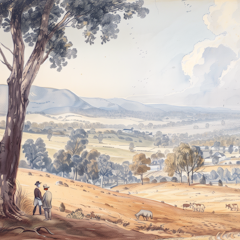
Articles on Chatbots
Displaying 1 - 20 of 82 articles

AI-powered mental health chatbots have the advantage of being easily accessible. However, users may overestimate their therapeutic benefits and underestimate their limitations.

There’s no escaping generative AI as it infiltrates our workplaces and daily lives. Learning what these tools can do will help you understand their full impact.

I’m hunting for the woman whose use of an early chatbot turned the inventor against his creation.

AI ghosts, the recreation of digital versions of the dead, may sound like a wonderful idea to those dealing with the pain of loss but this technology could seriously disrupt the grieving process

Future AI large language models like Google’s AMIE might prove to fill gaps in health-care delivery, however, they must be adopted with caution.

After all, it’s not a real person.

Common misperceptions about AI chatbots are that they know something about the world, can make decisions, are a replacement for search engines and operate independent of humans.

Before AI becomes widespread in health care, we need to ask what matters to consumers.

Students often use generative AI tools for engaged learning. They have a critical and nuanced understanding of these tools.

Training AI systems with more focused data sets can target them to a specific use.

What should you do if you’re tempted to use ChatGPT for medical advice? For starters, don’t use it.

A scholar of digital religion explains why the use of AI isn’t necessarily displacing religious leadership: It is the clergy who are helping with the programming, critical for its deployment.

The merging of technology and faith is sparking a transformative shift in redefining spirituality and religious practices.

Snapchat’s AI-powered chatbot malfunctioned this week, raising questions of “sentience” among users. As AI becomes increasingly human-like, society must become AI-literate.

A chatbot that lets users express their feelings by drawing may help communication and treatment for people with chronic pain.

Politicians and their campaigns use a lot of methods, including manipulation and deception, to persuade you to vote for them and give them money. AI promises to make those attempts more effective.

It’s difficult to see how artificial intelligence systems work, and to see whose interests they work for. Regulation could make AI more trustworthy. Until then, user beware.

Not quite, writes an expert on Christian worship. Chatbots do not have human experience of love – and, above all, they lack a soul.

Artificial intelligence could be used to generate content intended to manipulate people. Addressing this problem means understanding how communication works to influence people.

Generative AI, those astonishingly powerful language- and image-generating tools taking the world by storm, come at a price: a big carbon footprint. But not all AIs are equally dirty.
